Let's talk Tibetan Mastiffs
Grand and glorious, the Tibetan Mastiff makes quite a statement with their flocculent coat and larger-than-life presence. A historic breed, they are said to be the grand poobah from which all Mastiffs descend. Classified as a giant breed but smaller than some, the Tibetan Mastiff is still a lot of dog to handle so not a great option for a first-time dog owner. Bred as guard dogs, they are dignified and protective. That said, they are a big mushball with those they know and once well-trained, a great companion and family dog.
Official name: Tibetan Mastiff
Other names: None
Origins: Tibet
Drooling tendencies
2 out of 5Shedding Level
2 out of 5Energy level*
5 out of 5Compatibility with other pets
5 out of 5Warm weather?
2 out of 5Suited to apartment living
1 out of 5Family pet?*
5 out of 5Can stay alone
1 out of 5
| Male | Female |
|---|---|
| Height | Height |
| 66 - 67 cm | 61 - 62 cm |
| Weight | Weight |
| 40 - 68 kg | 31 - 54 kg |
| Life stages | |
|---|---|
| Adult | |
| 8 months to 2 years | |
| Mature | Senior |
| 2 to 5 years | From 5 years |
| Baby | |
| Birth to 2 months | |
Drooling tendencies
2 out of 5Shedding Level
2 out of 5Energy level*
5 out of 5Compatibility with other pets
5 out of 5Warm weather?
2 out of 5Suited to apartment living
1 out of 5Family pet?*
5 out of 5Can stay alone
1 out of 5
| Male | Female |
|---|---|
| Height | Height |
| 66 - 67 cm | 61 - 62 cm |
| Weight | Weight |
| 40 - 68 kg | 31 - 54 kg |
| Life stages | |
|---|---|
| Adult | |
| 8 months to 2 years | |
| Mature | Senior |
| 2 to 5 years | From 5 years |
| Baby | |
| Birth to 2 months | |
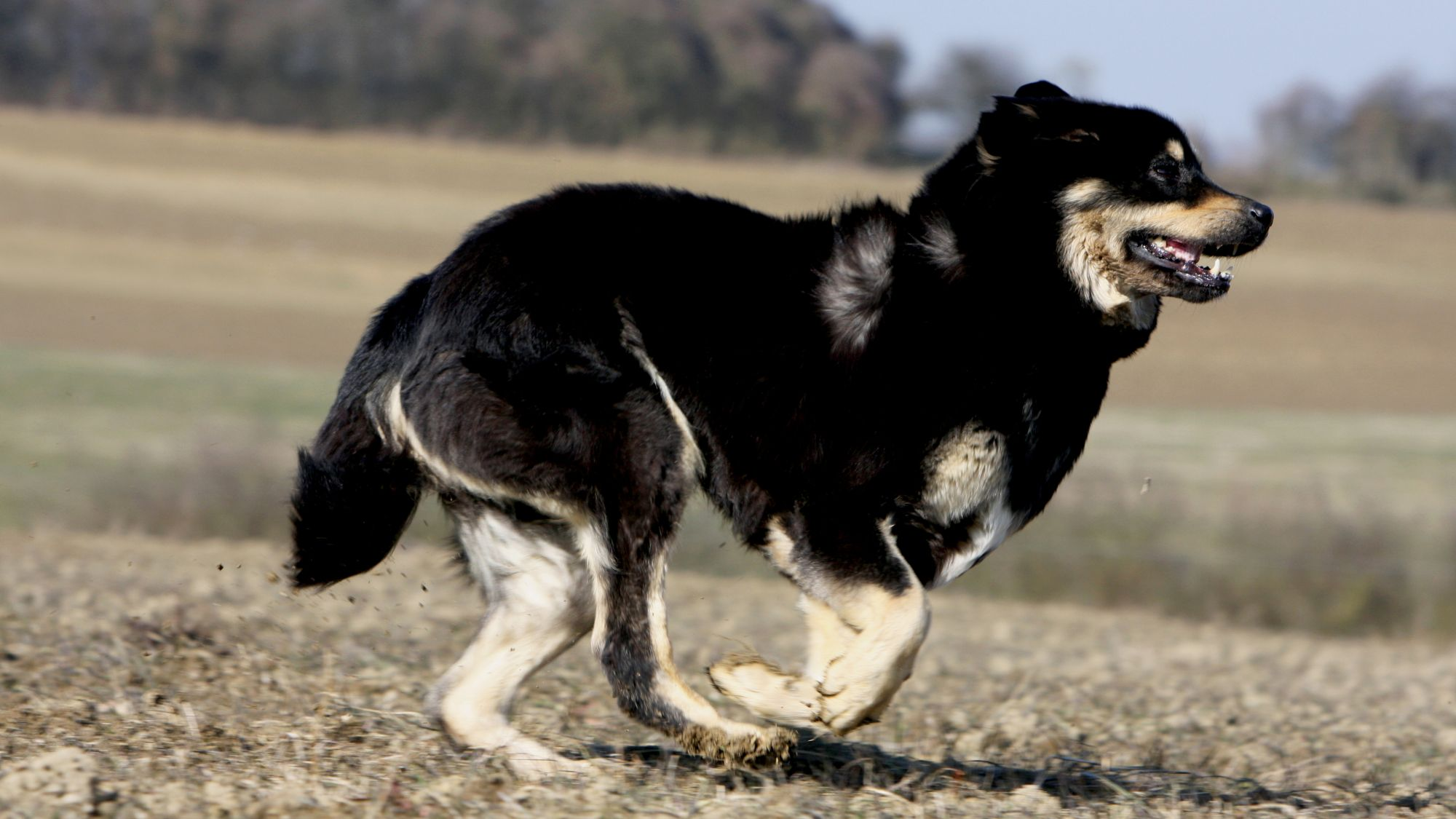
Get to know the Tibetan Mastiff
All you need to know about the breed
The American Kennel Club calls the Tibetan Mastiff “the ancient grandfather of all Mastiffs,” such is the legacy of this storied dog. They’ve existed for centuries, firmly instilling their instinctual confidence. The Tibetan Mastiff has great reverence for their owners, and will thrive on the same in return.
A very intelligent breed, they take direction but may not heed commands terribly well given their independence. And don’t think there’s aggression underneath that plush covering: the Tibetan Mastiff is a softie, patient and affectionate toward those they know. If newcomers are introduced by trusted humans, the Tibetan Mastiff may be aloof but will warm up soon enough.
Known as loyal, the breed puts family first. They do well with children once trained - even better if raised with them - but may find their frolicking threatening rather than fun. Centuries as a guard dog have made this majestic breed wary of behaviour that seems out of place, at least when it comes to canine standards.
The yard is one of the Tibetan Mastiff’s favourite places, but install a very high fence there. The breed has been known to climb higher than owners might think. Despite their bulk, this is an athletic dog, able to run fast, after would-be intruders and a ball with equal measure.
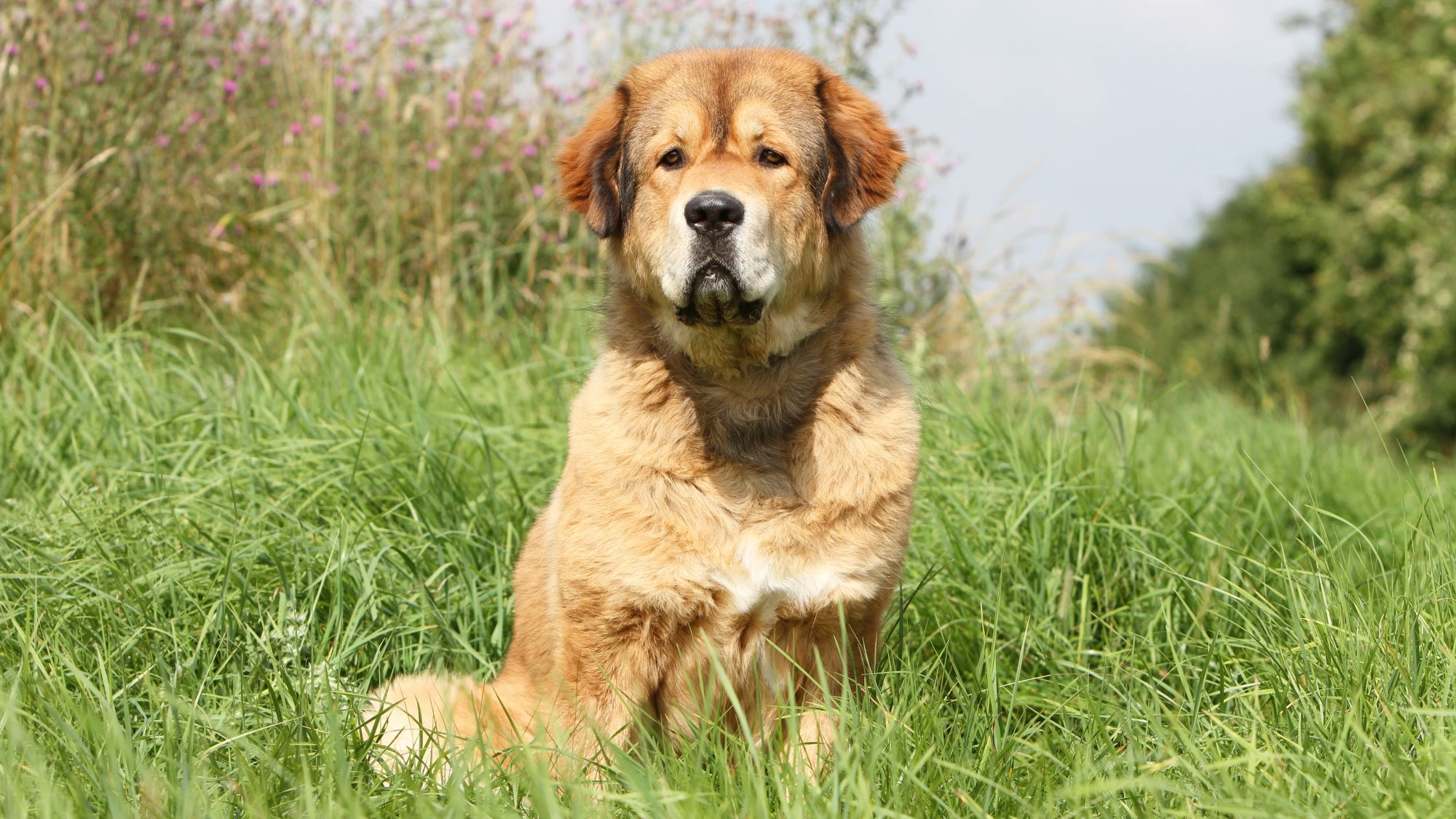
2 facts about Tibetan Mastiffs
1. Change is good
Breeds like the Tibetan Mastiff have been raised to protect and serve, but something as simple as a walk could kick in that need too strongly. Varying the route of the daily stroll is a good idea to keep your Tibetan Mastiff from acting as though they own the neighbourhood. The instinctive trait to dominate at times can be simply solved by taking the road less traveled, a healthy alternative all around.
2. Reaching their potential
Often, giant breeds like the Tibetan Mastiff are slow to develop and reach full maturity. Males reach full maturity between four and five years of age, and females between three and four. This means your Tibetan Mastiff will have puppy-like behaviour while they grow into a very large animal. Little ones should be watched in order to avoid undue harm. Young dogs can also be, dare we say, stubborn? So training your Tibetan Mastiff should be a part of their upbringing for the length of their life.
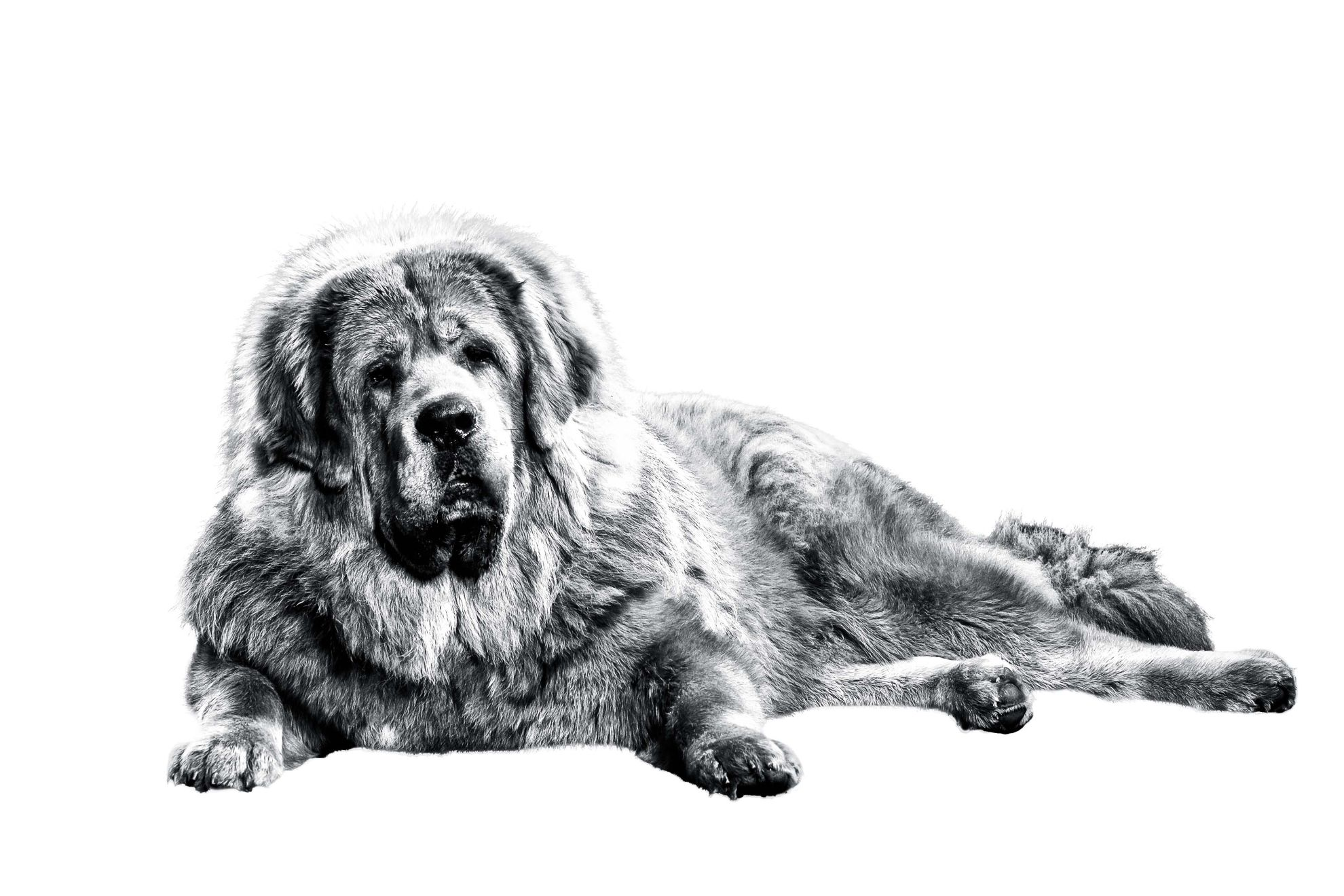
History of the breed
Few breeds can be traced to antiquity, but such is the path of the Tibetan Mastiff. This massive canine hails from Tibet, developed in the Himalayas as a flock guardian and guardian of Tibetan monasteries. Villages and nomads found comfort in their companionship and guardianship. Skeletal remains from China put the dog’s ancestors in the Stone and Bronze Ages; other ancestors were found there around 5,000 years ago. It’s thought most modern working breeds descend from the Tibetan Mastiff.
In 1847, two Tibetan Mastiffs were given as a gift to Queen Victoria. England’s Kennel Club was formed in 1873 and the breed was entered. The dog flourished in England with the Tibetan Mastiff Breed Club formed in 1931.
In the late 1950s, two of the dogs were also given as gifts to President Eisenhower and the Tibetan Mastiff Club was founded in the U.S. in 1974.
The breed was recognised by the United Kennel Club in 1998 and the American Kennel Club in 2006.
From head to tail
Physical characteristics of Tibetan Mastiffs
1.Ears
2.Coat
3.Body
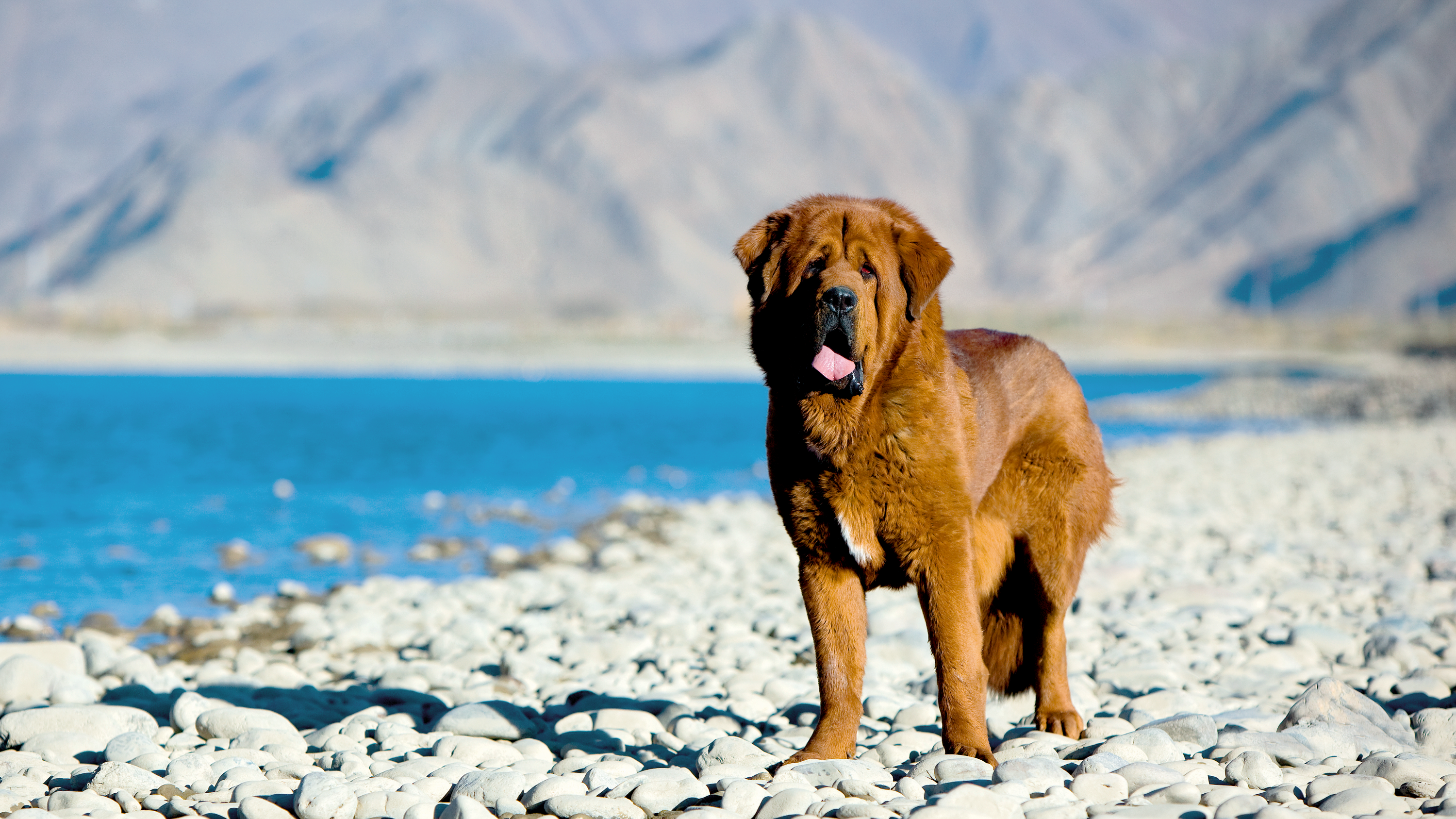
Things to look out for
From specific breed traits to a general health overview, here are some interesting facts about your Tibetan Mastiff
Low on energy
A common disorder for adult Tibetan Mastiffs is hypothyroidism. As with humans, a lack of the thyroid hormones is the culprit. Look for weight gain, flaky skin, and low energy as signs, and visit your vet for a proper diagnosis. Daily medication can easily manage the condition.
A little disjointed
The Tibetan Mastiff breed can suffer from hip dysplasia, a syndrome where the ball and socket joint don’t meet properly. Serious pain – even arthritis – can occur. Elbow dysplasia, causing lameness in front legs, can also happen. Obtain a puppy from a reputable breeder who screens the parents for both.
Healthy diet, healthier dog
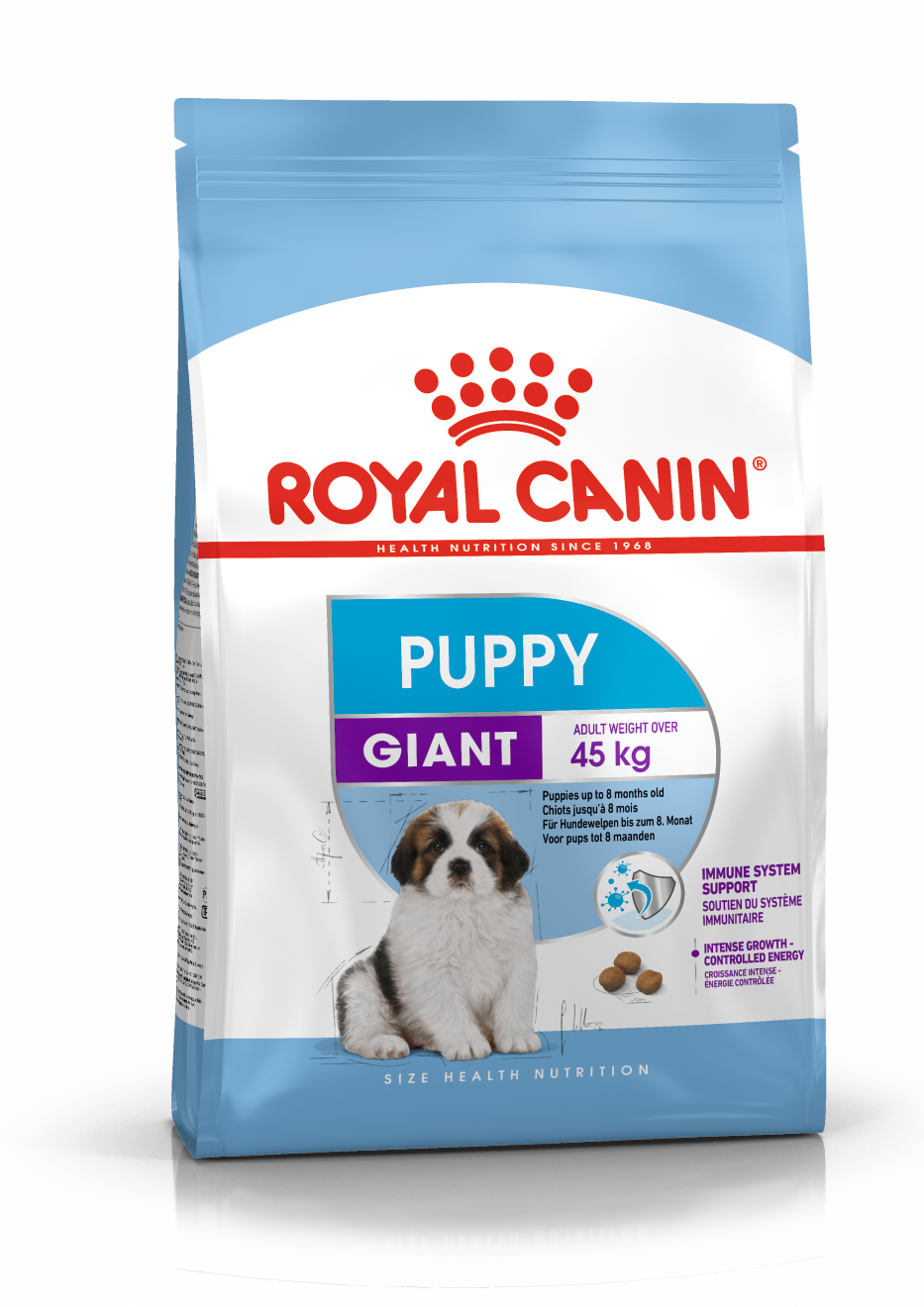
When choosing food for a Tibetan Mastiff, there are many factors to consider: their age, lifestyle, activity level, physical condition, and health including potential sickness or sensitivities. Food provides energy to cover a dog’s vital functions, and a complete nutritional formula should contain an adjusted balance of nutrients to avoid any deficiency or excess in their diet, both of which could have adverse effects on the dog. As giant-sized breed dogs have a higher risk of a condition called gastric dilatation volvulus (GDV), where the stomach becomes overstretched and rotated because of excess gas, usually caused by overfeeding during a meal, it’s recommended to split the daily allowance into three meals for puppies and try to keep this routine into their adult years.
Clean and fresh water should be available at all times to support good urinary regularity. In hot weather and especially when out exercising, bring water along for your dog’s frequent water breaks. Energy intake may also have to be adapted to the climatic conditions. A dog that lives outdoors in winter will have increased energy requirements.
The following recommendations are for healthy animals. If your dog has health problems, please consult your veterinarian who will prescribe an exclusively veterinary diet.
A Tibetan Mastiff puppy’s requirements, in terms of energy, protein, minerals, and vitamins, are greater than those of an adult dog. They need energy and nutrients to maintain their body, but also to grow and build it. During their growth, Tibetan Mastiff puppies’ immune system develops gradually. A complex of antioxidants - including vitamin E - can help support their natural defences during this time of big changes, discoveries, and new encounters. Their digestive functions are different from an adult Tibetan Mastiff’s, too: their digestive system is not mature yet so it is important to provide highly digestible proteins that will be effectively used for the building of bones, tissues, and organs. Prebiotics, such as fructo-oligosaccharides, can support digestive health by helping balance the intestinal flora, resulting in good stool.
Giant-sized puppies, whose growth period is long and intense, are especially susceptible to skeletal and joint problems, including limb defects, bone deformities, and joint lesions.
The first part of growth (up to 8 months) is mainly concerned with bone development, although the muscles also start to grow. This means that a puppy that eats too much (takes in too much energy) will put on too much weight and grow too quickly. A food with an adjusted calorie content to support a high growth rate while at the same time avoiding excess weight gain will help minimise these risks. A balance of energy and minerals (calcium and phosphorus) during this first phase of growth will contribute to bone mineralisation in order to support bone consolidation and the development of healthy joints. Although the calcium content in the food needs to be increased, giant-sized breed puppies are more sensitive to excessive calcium intake. It’s important to understand then that adding any ingredients to a complete food formulated for the growth phase is at best unnecessary and at worst dangerous for the animal, unless prescribed by a veterinarian.
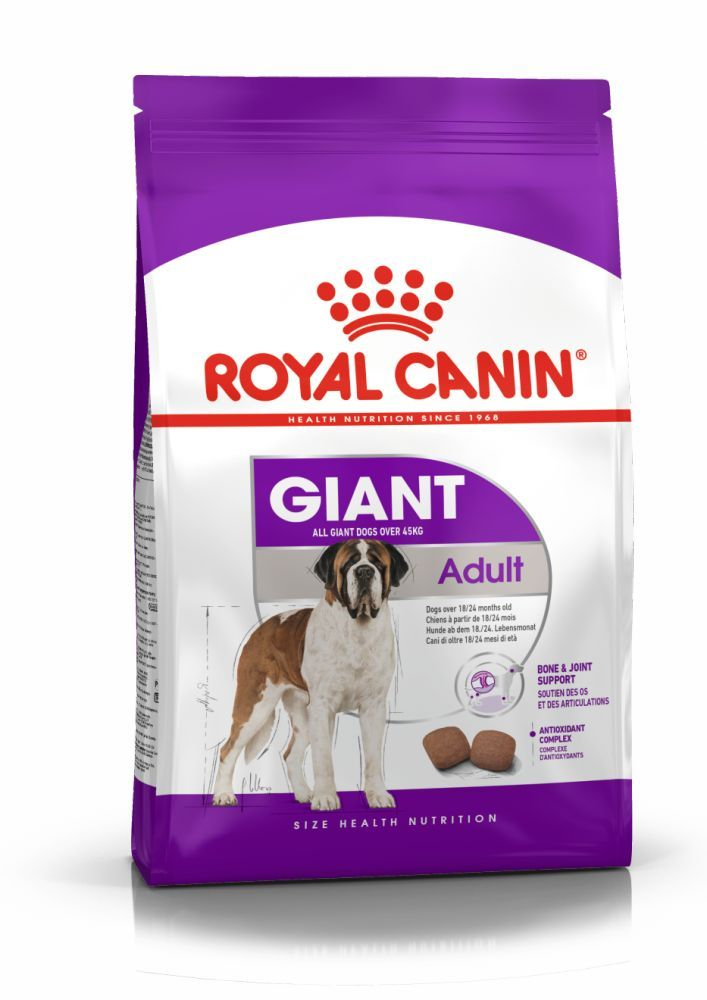
As with many giant-sized breed dogs, Tibetan Mastiffs are prone to digestive sensitivity, and their body weight can create stress on their joints throughout their lifetime. A Tibetan Mastiffs’ nutritional needs then should include high quality protein and a balanced supply of dietary fibre to help promote optimal digestibility, as well as glucosamine, chondroitin, and antioxidants to help support the health of their bones and joints. A formula enriched with omega-3 fatty acids, such as EPA-DHA, will help maintain healthy skin. An adapted taurine content is also important to support healthy heart function.
It is important to avoid feeding Tibetan Mastiffs human foods or fatty snacks. Instead, reward them with kibble taken from their daily meal allowance, and strictly follow the feeding guidelines written on the package.
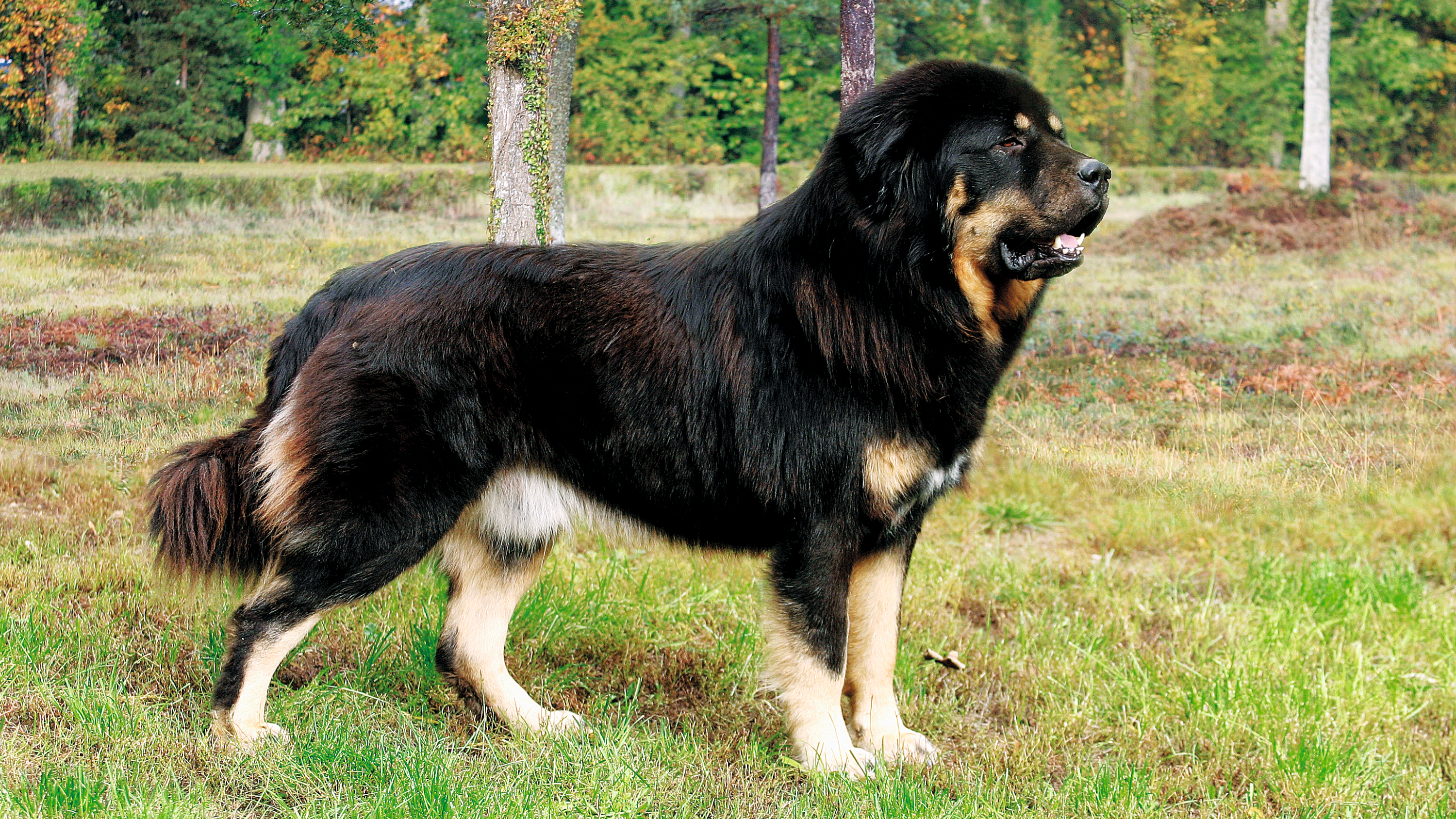
Caring for your Tibetan Mastiff
Grooming, training and exercise tips
7/7
All about Tibetan Mastiffs
Giant breeds are a wonder of physical engineering, some weighing more than the average person. Although not the largest dog in the world, the Tibetan Mastiff ranks up there when it comes to height, an average 25 inches (63.5cm) and heft, at an average 125lbs (57kg). First place for biggest dog is held by the Tibetan Mastiff’s distant cousin, the Mastiff, some of whom can weigh up to 230 pounds (104kg)!
The admirable traits of the Tibetan Mastiff are many but as a giant breed, potential owners should give a good amount of thought to having them as a pet. They’re intelligent and independent but simply put, can be a lot to handle, with a hulking size and capacity for drool that’s enough to throw even the savviest dog owner. Train your Tibetan Mastiff with someone who knows the breed well and you - and your dog - will benefit in spades.
Suggested Breeds
Read more on this topic
- Veterinary Centers of America https://vcahospitals.com/;
- Royal Canin Dog Encyclopaedia. Ed 2010 and 2020
- Banfield Pet Hospital https://www.banfield.com/
- Royal Canin BHN Product Book
- American Kennel Club https://www.akc.org/
Like & share this page